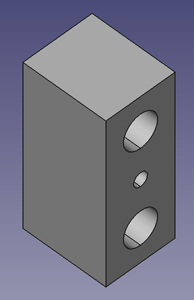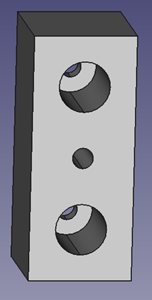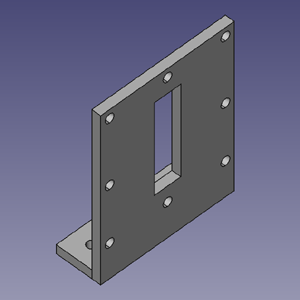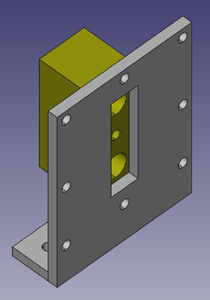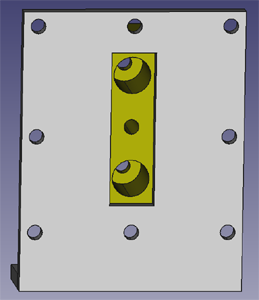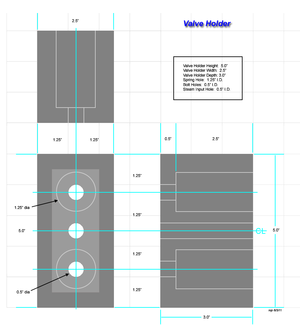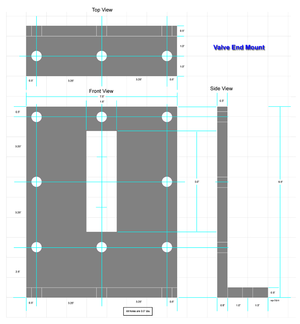Steam Engine Build/Valve Cover
Main > Energy > Steam Engine
Steam Engine Build Instructions
Description
The valve cover serves the following functions:
- Holds the valves in place
- Holds and aligns the valve springs in place
- Shelters the valve springs from steam heat
- Provides steam to the engine via the steam input vent
- Creates a sealed steam chamber by bolting the valve cover to the valve seat and cylinder flange
- Provides a mounting bracket to support the steam engine
Because of the size of the valves and valve springs, the valve cover is quite thick along the engine center line axis. Eventually, this part should be molded in cast iron. To simplify initial fabrication, the valve cover is built up from the three pieces of metal, welded together.
The design here is slightly different than earlier versions. Previously, a separate mounting bracket was used and is now merged into this element. Also, a flange around the end was eliminated for simplicity. If needed to make a better seal for the steam cabinet, it can be restored.
The valve cover consists of three sub-parts welded together as shown in the drawing (not to scale) above:
- Valve Cover Holder
- Valve Cover Plate
- Valve Cover Base Flange
CAD
Drawing
Click on the image to see the drawings full size.
Instructions
1. Initial Valve Holder Fabrication
- Cut a piece of cast iron 2.5" by 5.0" by 3.0"
- On the 2.5" face, drill two 1.25" dia holes 1.25" from the top and bottom to a depth of 2.5".
- On the opposite face, drill two 0.5" holes through to the previous 1.25" dia holes.
- on the 2.5" face, drill one 0.5" hole completely through the valve holder.
2. Initial Valve Cover Plate Fabrication
- Cut a rectangle 7.5" by 9.5" from half inch cast iron plate.
- Cut a rectangular hole 1.5" by 5.0" centered in the plate.
- Drill eight half inch bolt holes top, bottom, left, right, and all four corners offset from the sides of the plate by 0.5".
- Weld the valve holder to the valve cover plate.
3. Weld Test
Welds attaching the block to the plate are critical because they must be absolutely air-tight or steam will escape. Worse, superheated steam will erode steel if it flows through a narrow channel (leak). The best way to test this to fabricate the cylinder valve seat (see Steam Engine Build/Cylinder Valve Seats, but omit milling of the valve seats. This allows the cap to be bolted to the valve cover plate with only the steam vent drilled.
(block/plate sub-assembly for weld test)
The steam vent can then be used to pressurize the steam chest (gap between the valve cover and the cylinder end cap). Soap brushed over the welds should reveal leaks. For additional testing, immerse the test assembly into a pan of oil and repeat the pressure test looking for bubbles formed. Assuming a source of air pressure equal to estimated steam pressure (150psi), this will verify steam-tight welds.
